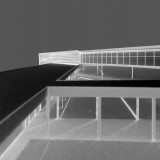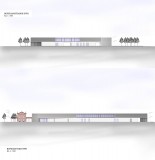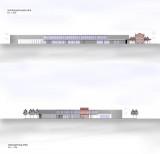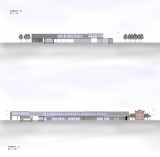Supervisor:
2019
People's need for movement is lost in the depths of history. With the discovery of the locomotive, the revolution in the transport comes. The train is gaining ground as a means of transport, linking regions and facilitating travel. Over the next few years the railway network is stretched and stations are being built. These stations, often landmarks of the areas in which they are located, become cultural points.
In this paper we examine the area of the train station in Agria, Volos. The project for the railway connection between Volos and Larissa, the work of the railway company of Thessaly, in the plans of the Italian engineer Evaristo de Chirico, included the connection of Volos with the villages of Pelion. In this context, the station was built in Agria. Now the route Agria - Volos does not take place and the station has become useless. Nevertheless, it continues to be a landmark.
By studying the area of Agria, a basic need that was found was the need to concentrate cultural sites at one point. For this reason, it is proposed to create a cultural center. As a point, the train station is chosen as a memorial space and culture carrier capable of supporting the functions of such a building. In addition, the location in a nodal area for the area is ideal for hosting cultural uses, while the proximity to Valis Resort, which attracts conference tourism, makes it an ideal spot.
A museum space will be hosted in the building, with reports on both the history of the site and the history of the railways. The exhibition will continue on the station building, as the main objective of the study is the simultaneous connection of the new one with the existing train station building, as well as the highlighting of the station.







